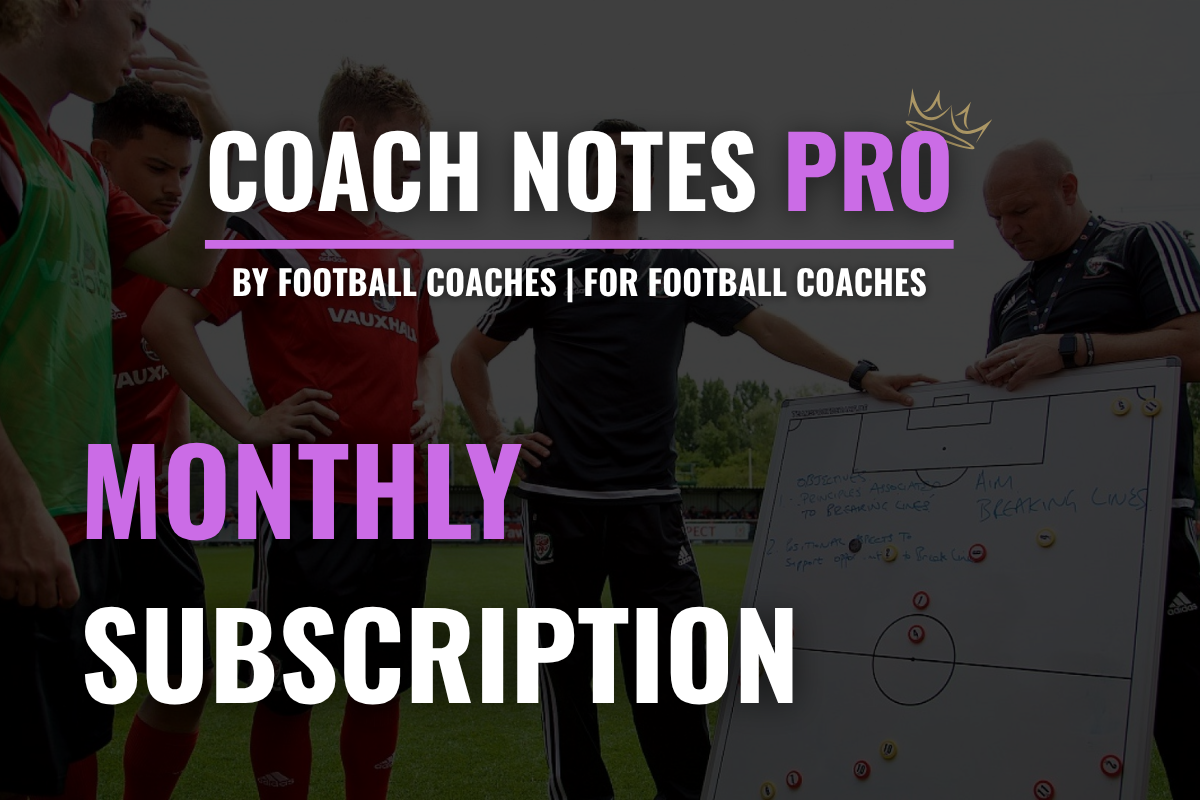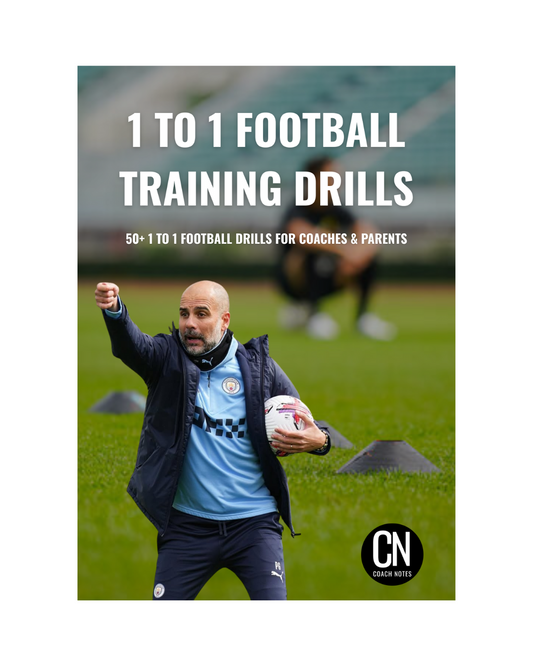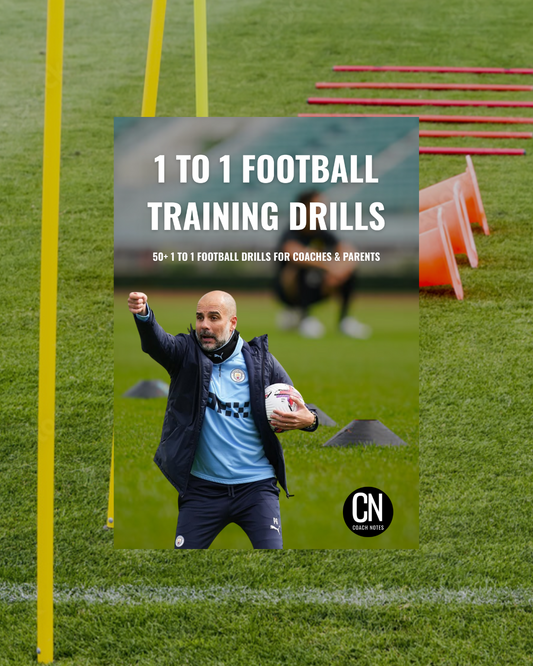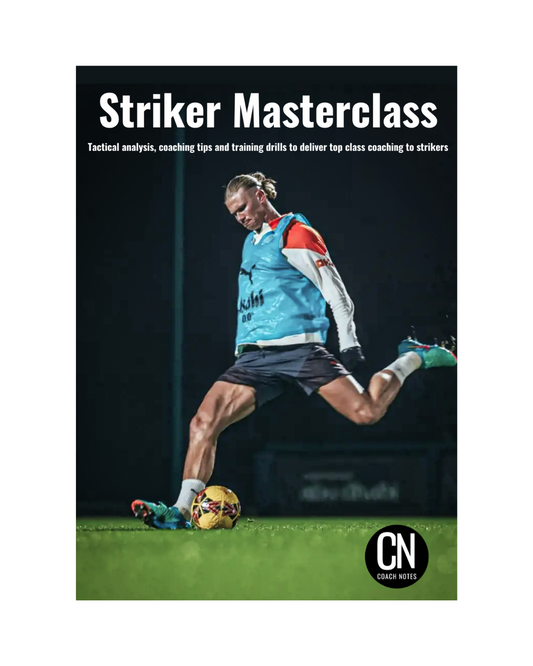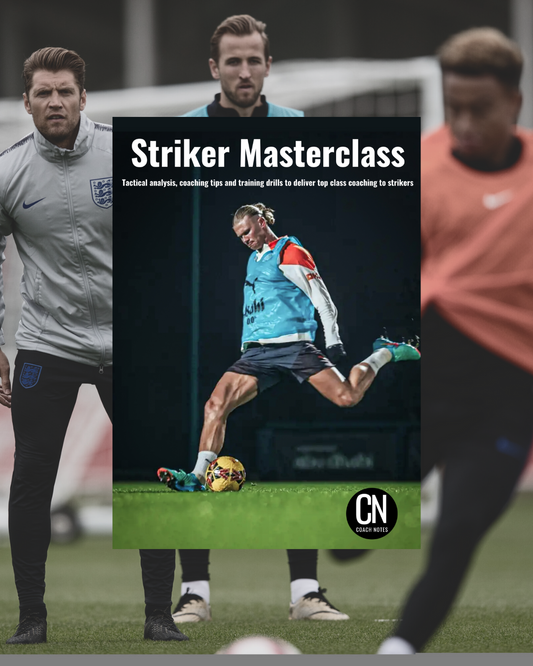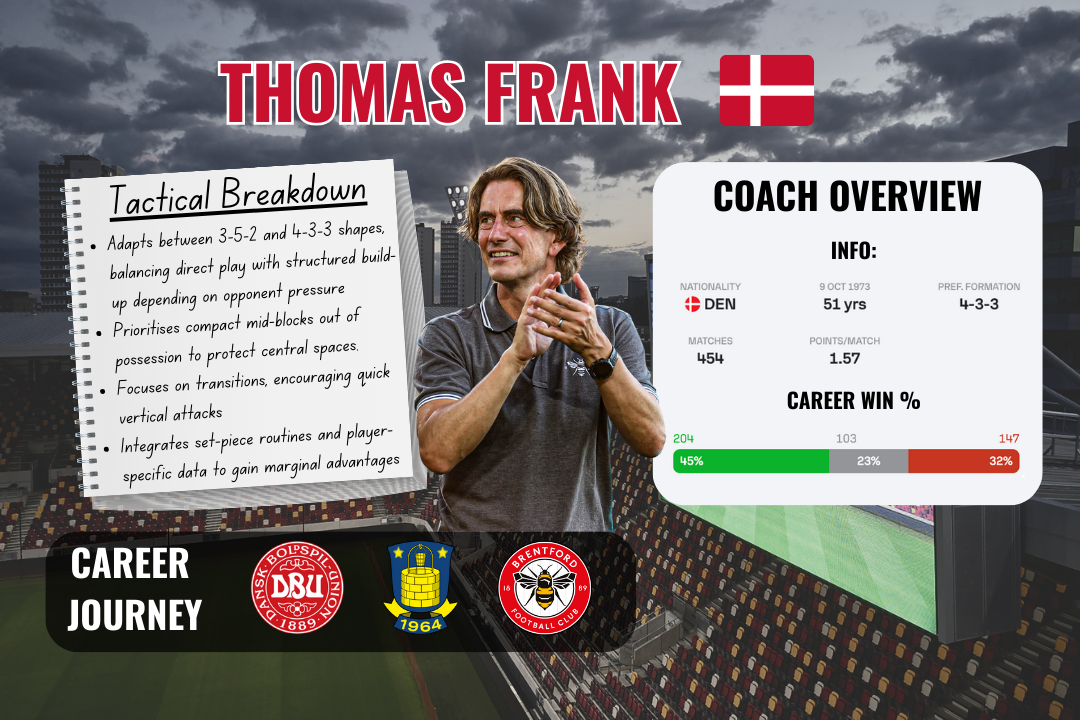
Thomas Frank
Share
👤 Coach Bio
Thomas Frank’s coaching journey reflects adaptability, tactical acumen, and a commitment to development. Beginning in Denmark’s youth setup, he gained recognition for his methodical approach at Brøndby IF before moving to Brentford in 2016 as an assistant. He took charge as head coach in 2018 and oversaw the club’s first promotion to the Premier League in 74 years. Frank’s Brentford are now a respected top-flight side, known for their structured play and innovative integration of data and analytics.
⚽️ Playing Philosophy
Frank’s philosophy combines tactical pragmatism with structured flexibility. Rather than rigid ideology, he believes in creating stability through organisation and maximising marginal gains. His teams are drilled in collective movement, pressing cohesion, and effective transition play. While not obsessed with possession for its own sake, Frank values clarity of role, intelligent positional play, and adaptability to the opposition.
The underlying principle is control through structure, whether in deep defensive blocks or attacking transitions, every player has a defined purpose. He builds systems that get the best out of undervalued talent, often through clever recruitment and tailored development.
🧩 Style of Play
In Possession
Brentford commonly use a 3-5-2 or 4-3-3 shape, though fluid transitions between the two are frequent. Their build-up is pragmatic but capable of patient progression. While Brentford do not dominate possession, they are deliberate and vertical in how they use the ball.
- Build-up play often starts from the goalkeeper with a short option, but they’re equally capable of bypassing the press using direct balls to a target man like Ivan Toney.
- In the middle third, they favour overloads and rotations, particularly in half-spaces, using their wing-backs or full-backs to advance.
- In the final third, they aim to deliver early, quality service from wide areas or create chances through set-piece routines, an area where Frank’s staff are elite.
Out of Possession
Defensively, Brentford are disciplined. Their primary shape is a compact 5-3-2 or 4-4-2 in a mid-block, designed to funnel play wide and protect central areas.
- Compactness between the lines is key, with the two forwards pressing triggers often focused on backward passes or poor touches.
- They maintain high levels of engagement in central areas, rarely allowing opponents to settle.
- They switch between zonal and man-oriented pressing depending on the opponent’s build-up pattern.
Transitional Moments
Transitions are a major weapon for Brentford.
- Defensive transition sees an immediate drop into structure, rarely overcommitting players in the counter-press. The emphasis is on recovering shape and intercepting passing lanes.
- Attacking transition is more direct. Brentford look to exploit the disorganisation of opponents through vertical passes to the striker or wide runner. Second balls are crucial here, and players are drilled to anticipate knockdowns and flick-ons.
👉 How to Coach Like Thomas Frank
Thomas Frank is a relational coach who emphasises player understanding and data-informed decision-making. Training under Frank is focused, repetitive, and scenario-driven. Coaches looking to replicate his approach should:
- Use video and data to create player-specific feedback loops. Each player at Brentford has individual development plans built around key metrics like expected goals, sprint data, and position-specific actions.
- Design tactical training sessions that mimic real match scenarios, such as pressing in mid-blocks or building play against a high press.
- Allocate specific time for set-pieces, both attacking and defending, with detailed routines and clear roles for every player.
- Encourage flexibility and awareness, rather than just pattern-based automation. Players must understand why they're doing what they do, not just how.
👥 Player Profiles
Frank prefers players who are intelligent, physically robust, and versatile. He often selects:
- Strikers who can combine physical presence with link-up play and pressing.
- Wide players or wing-backs who offer high work rate, accurate delivery, and defensive solidity.
- Midfielders who can play between lines, receive under pressure, and quickly transition between phases.
- Centre-backs with ball-playing ability and comfort in both back threes and back fours.
Above all, he values mentality and coach-ability. Many Brentford players are recruited based on personality fit and capacity for growth.
🔑 Key Takeaways for Coaches
- Build a data-informed environment: Use performance data not just for recruitment but also to tailor training and evaluate development.
- Be flexible with tactics: Rather than fixating on one formation, design systems that allow role clarity and adjustment to different opponents.
- Drill transitional phases: Spend significant time coaching how your team reacts to gaining or losing the ball.
- Make set-pieces a priority: Brentford’s mastery of set plays is a consistent edge both defensively and offensively.
- Develop a player-first culture: Frank’s success is underpinned by strong relationships, clear communication, and a belief in continuous improvement.

